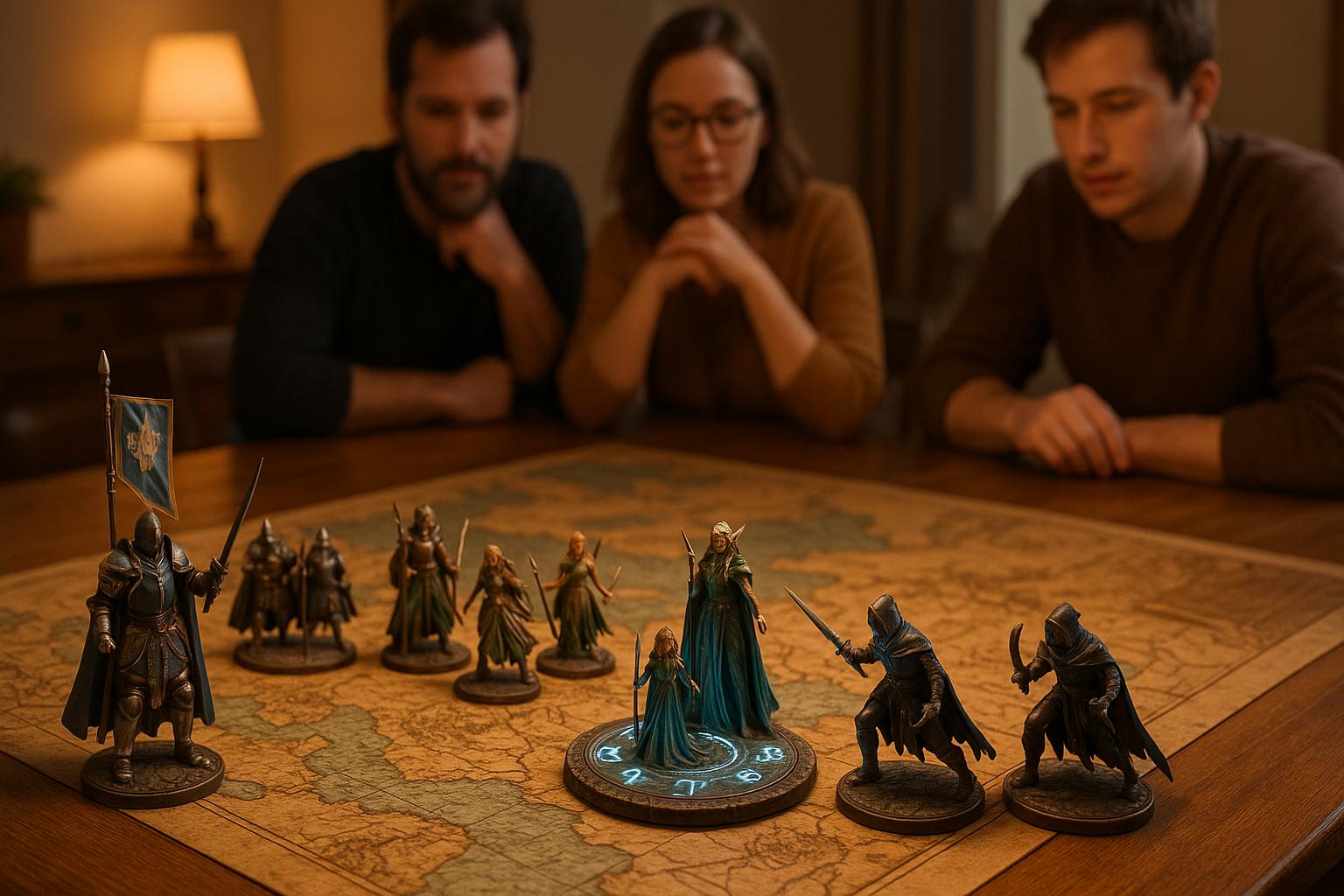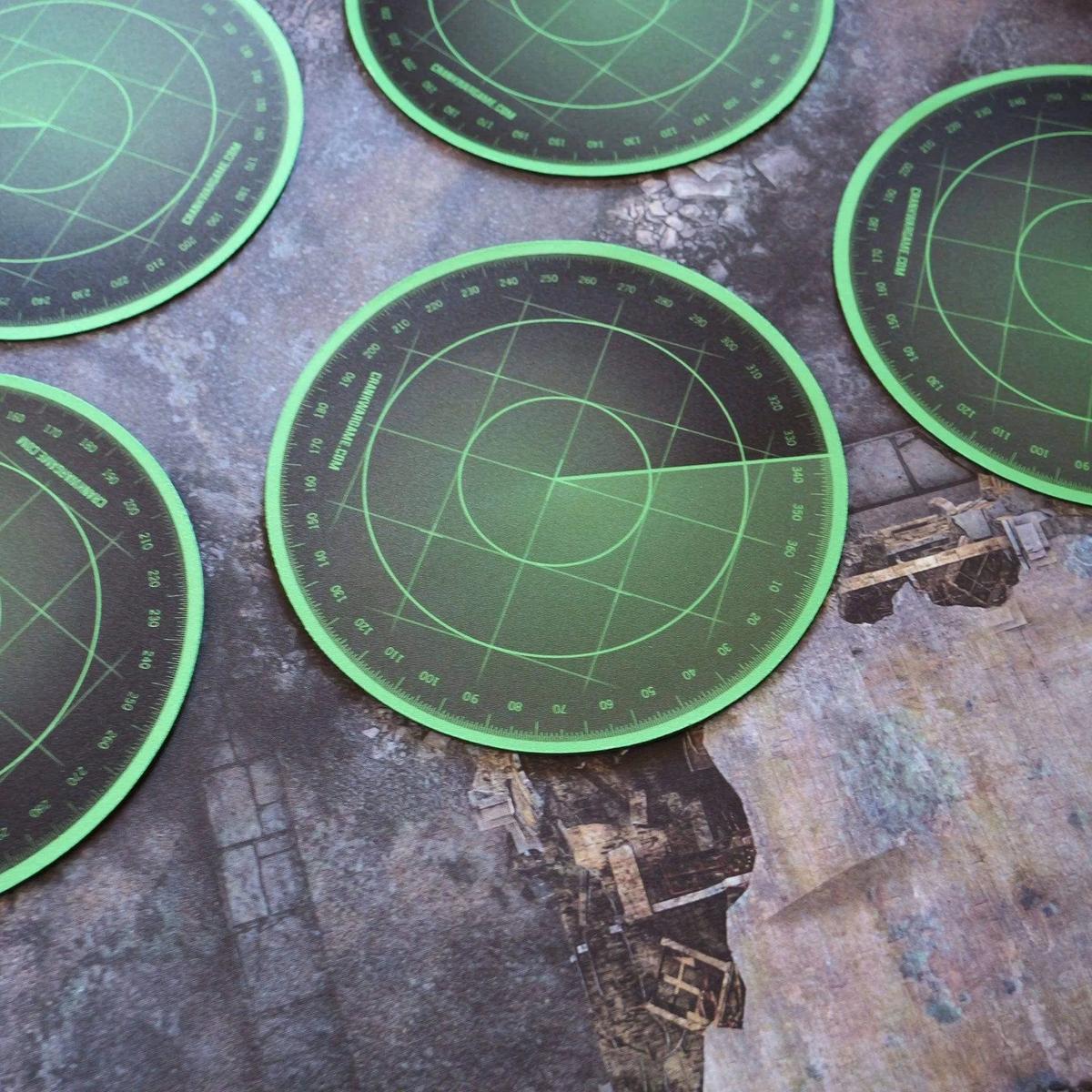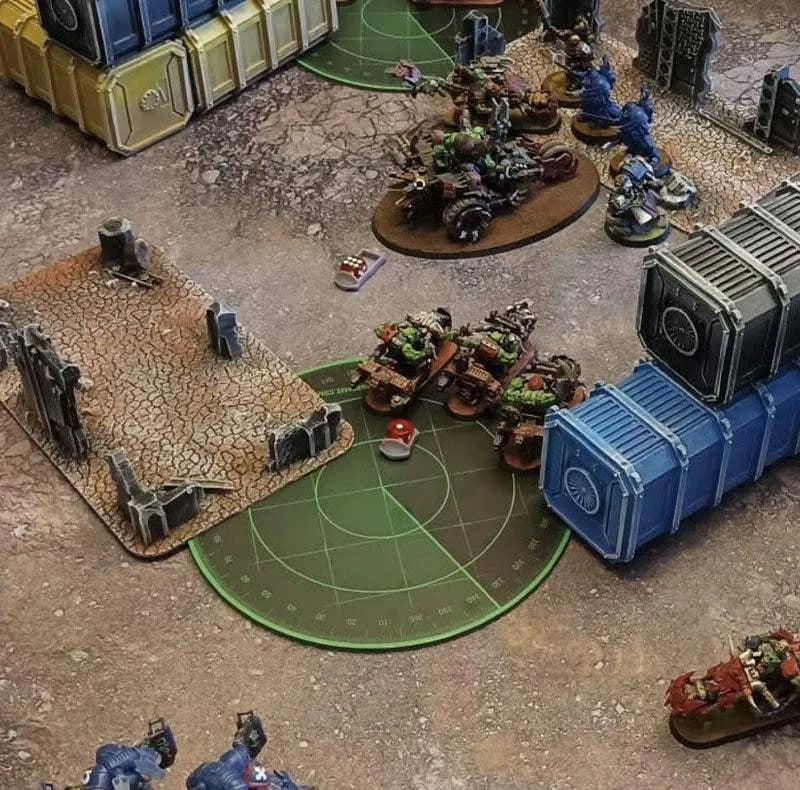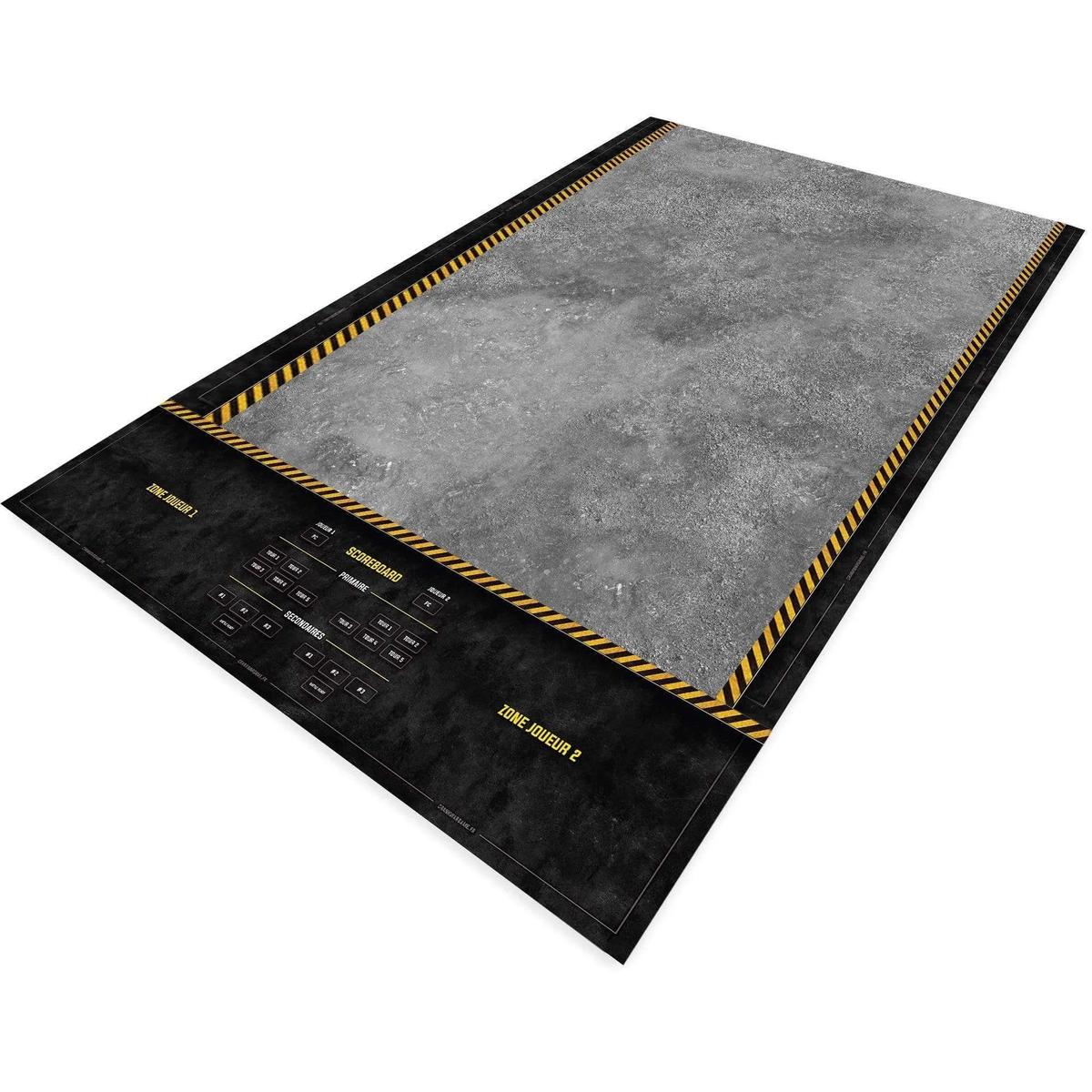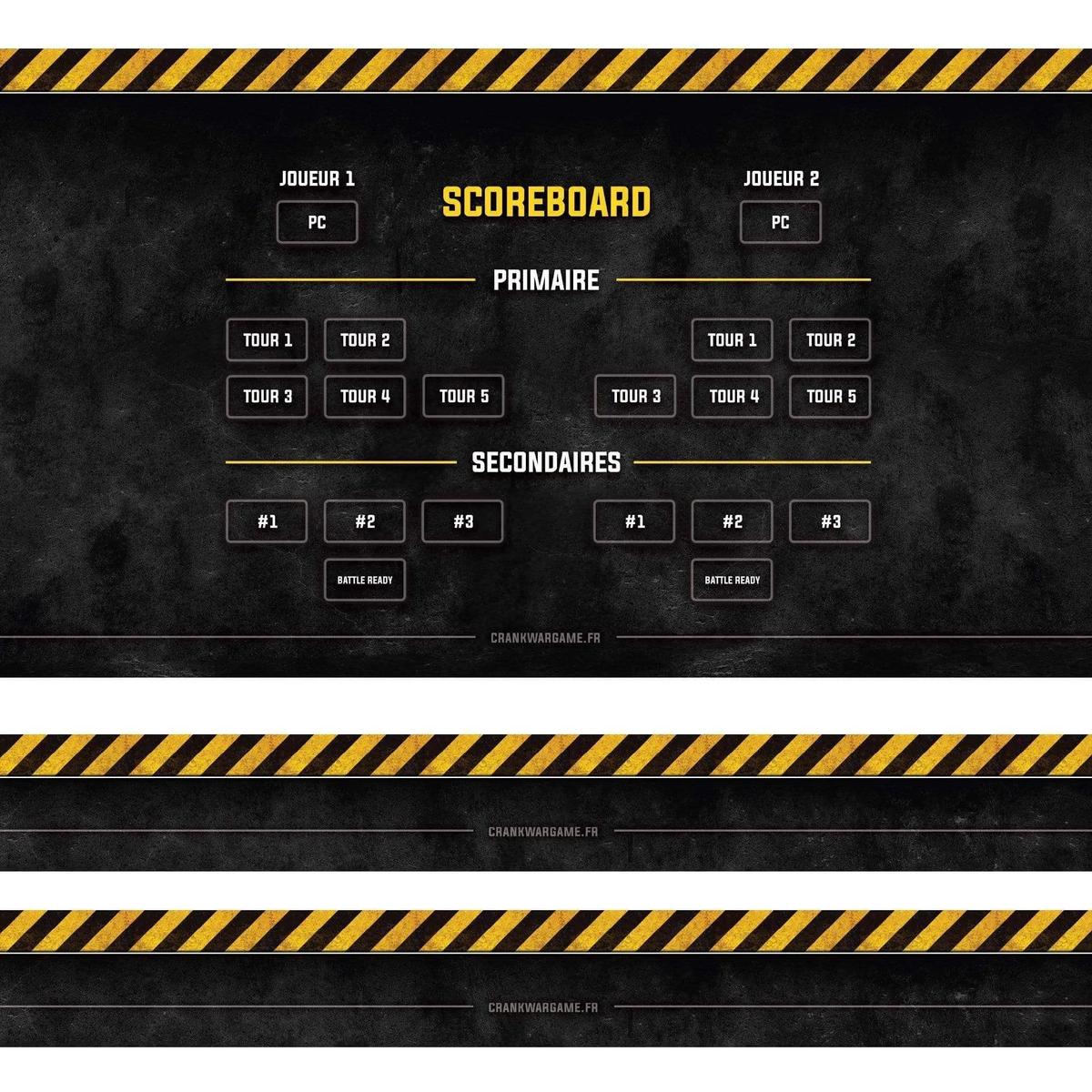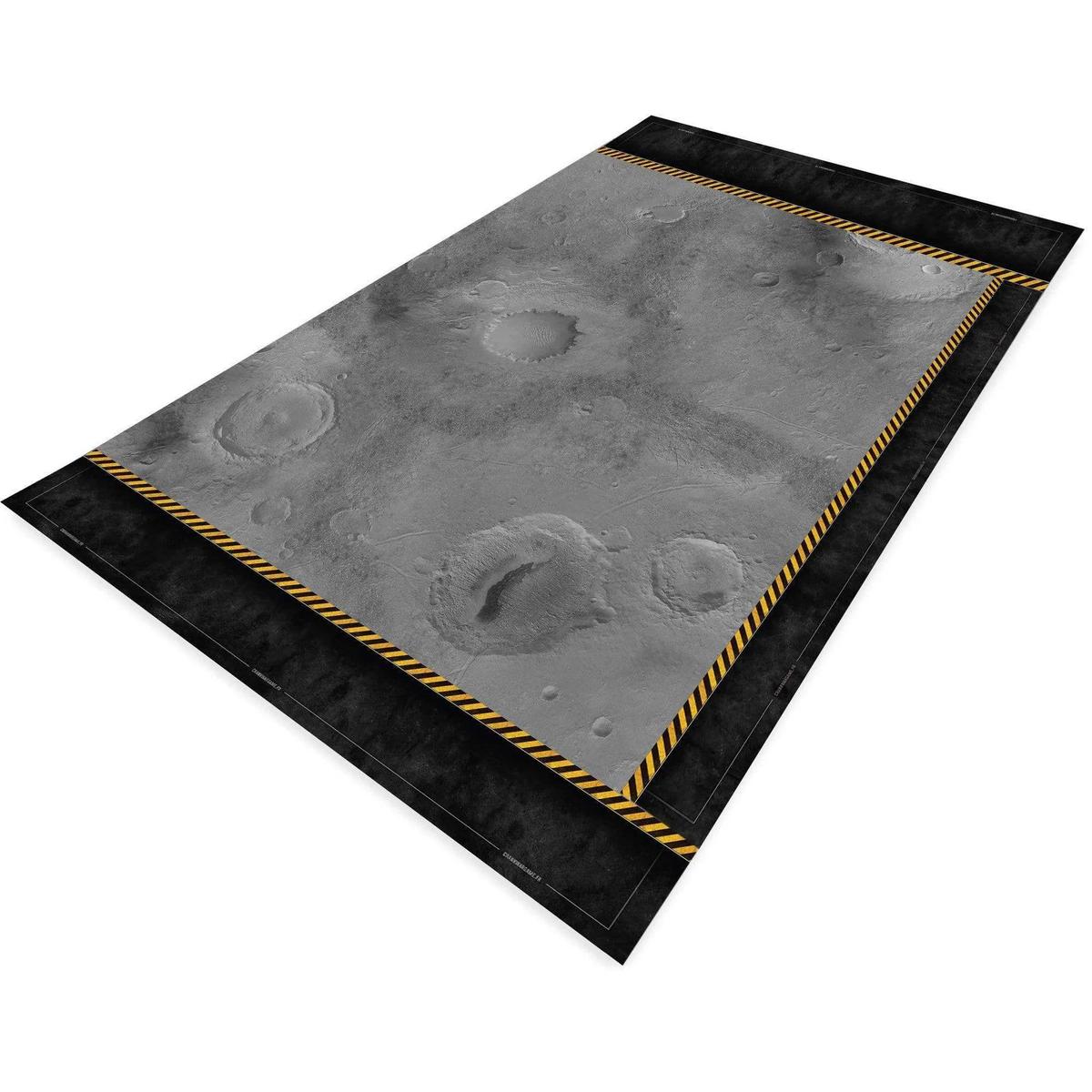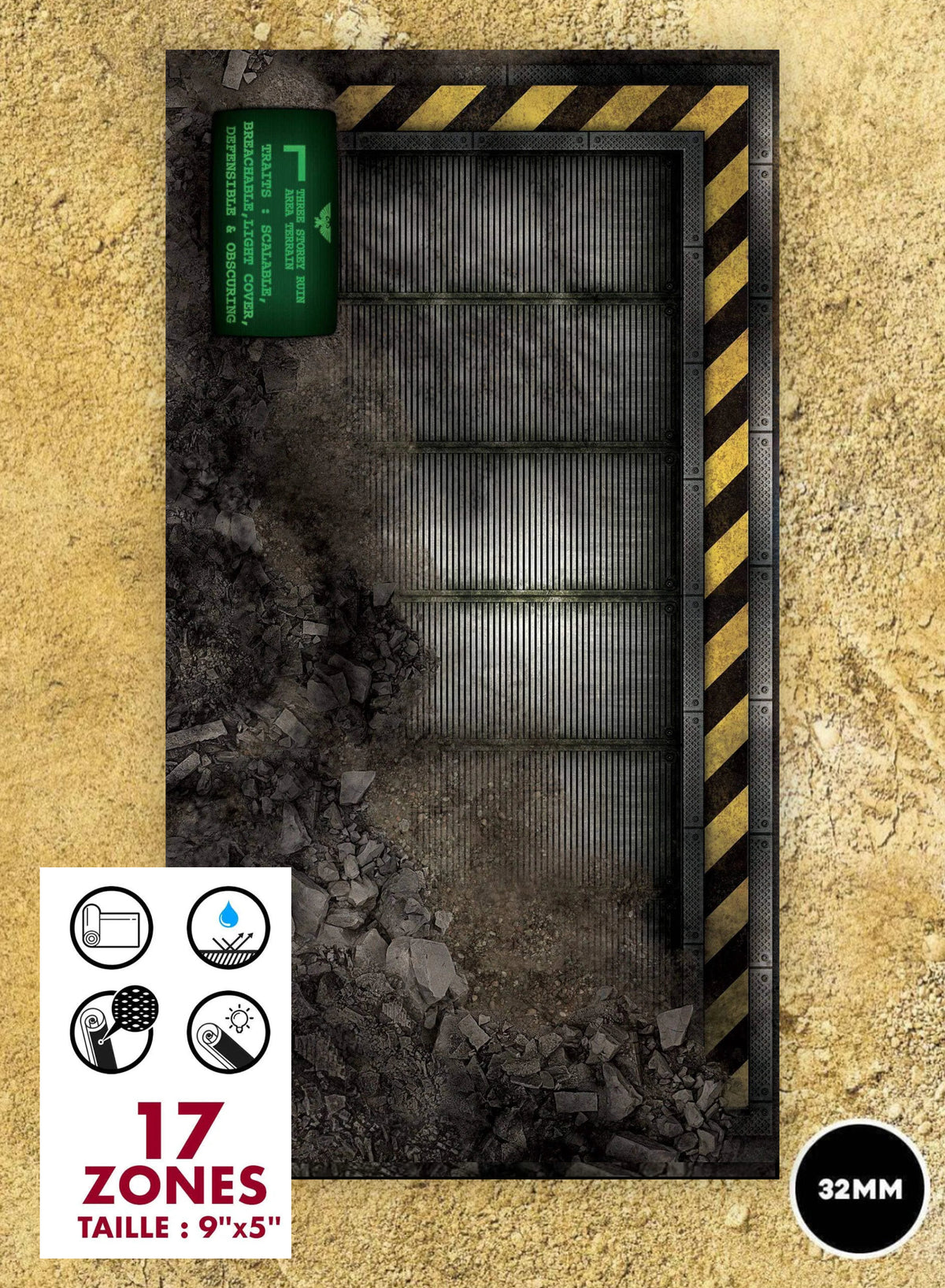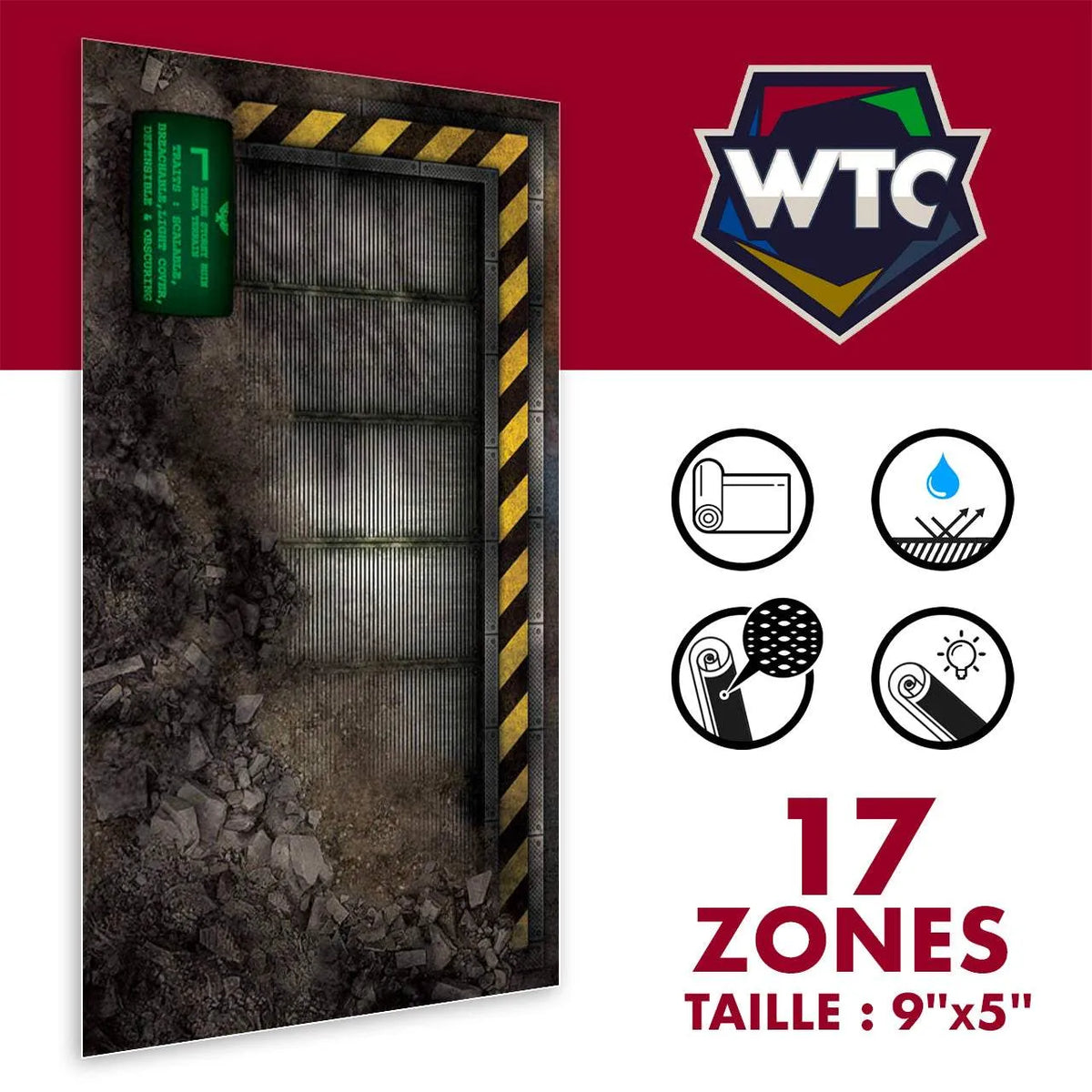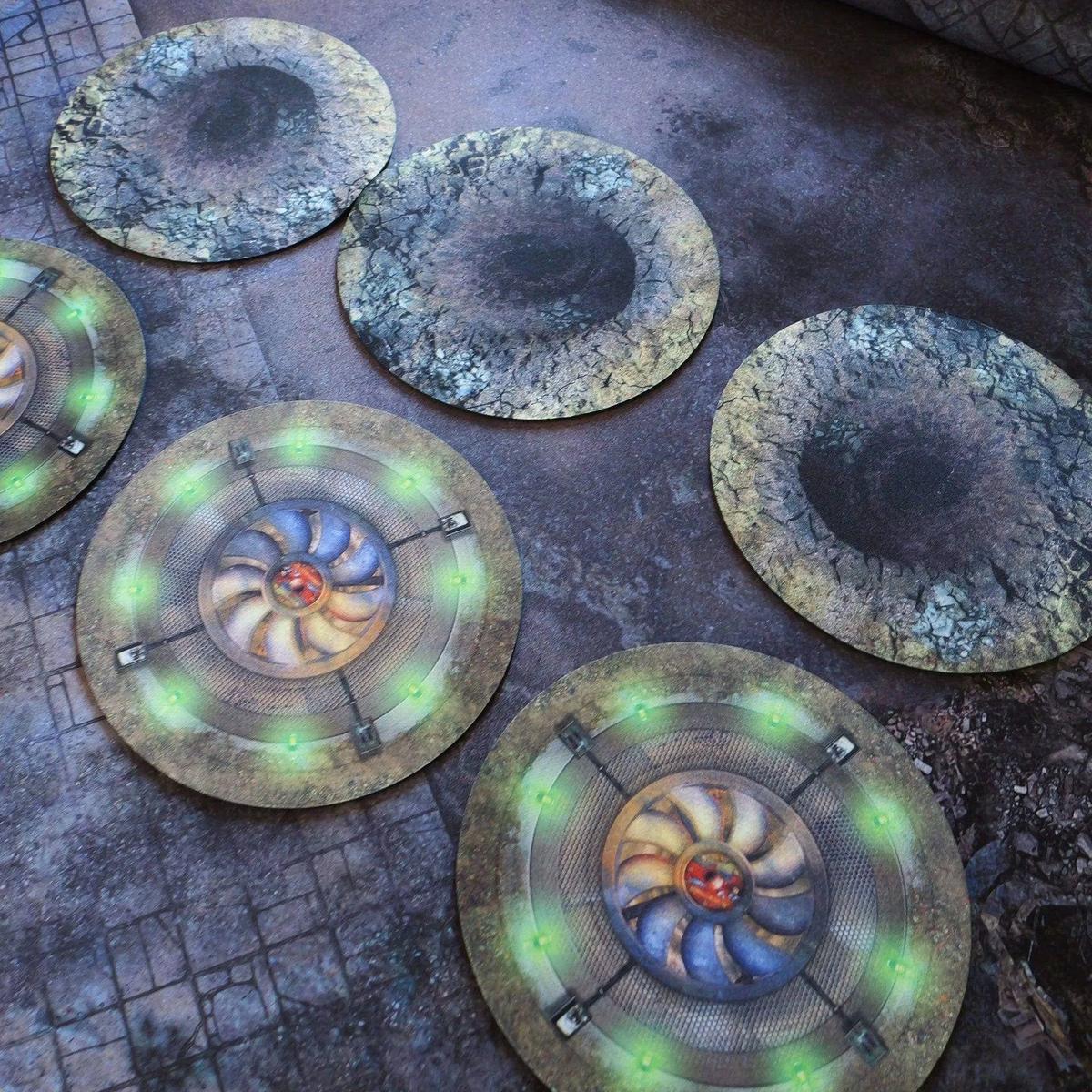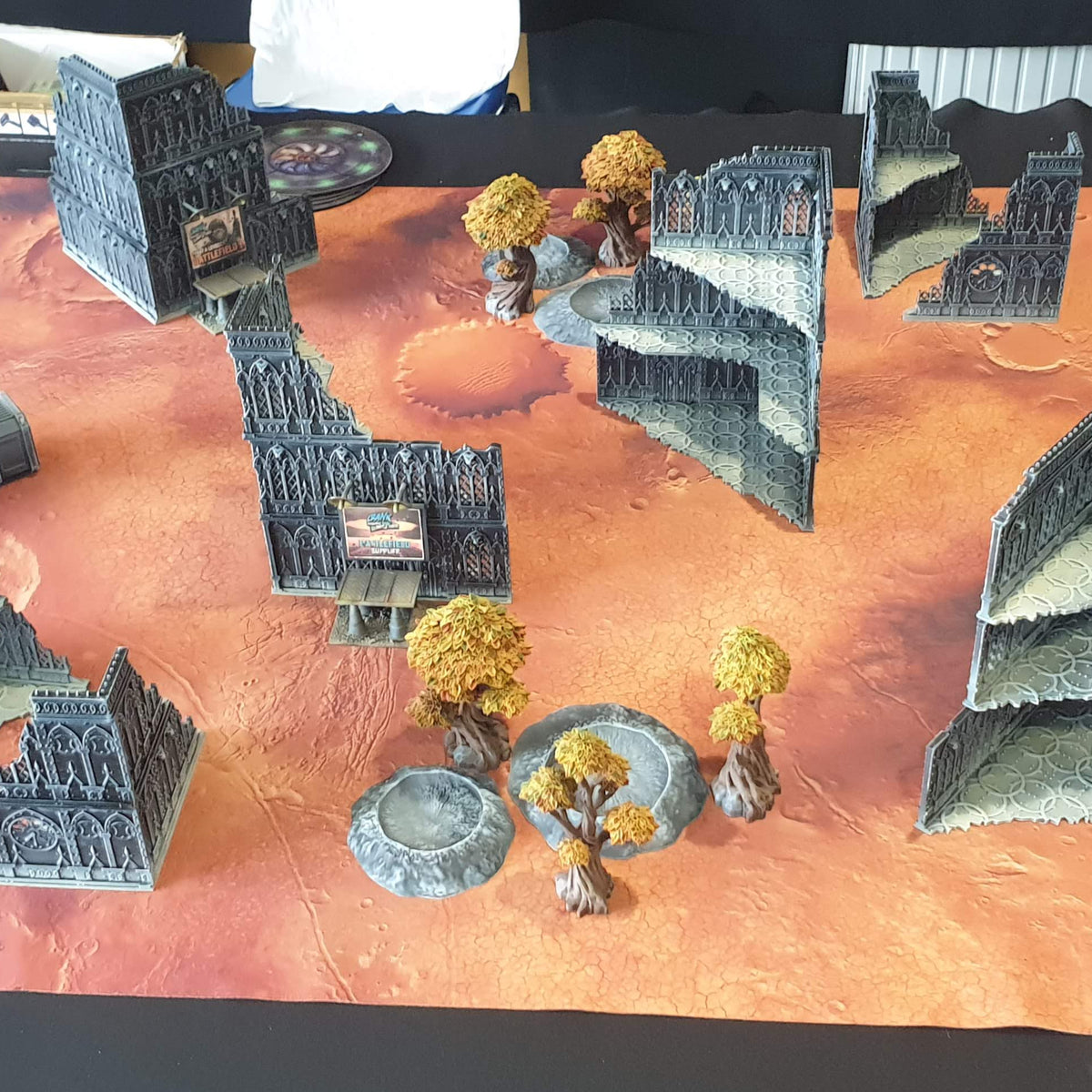Faction balancing in tabletop wargames relies on two main approaches: modifying scenario objectives or directly adjusting faction power . Here's a quick summary to help you understand both methods:
-
Balancing by objectives :
- Adapts missions, deployments or victory conditions.
- Promotes narrative immersion and varied scenarios.
- Fewer frequent changes in the rules of the game.
- Example: Asymmetric missions where each faction exploits its strengths.
-
Balancing by faction power :
- Adjusts unit point costs, abilities, or restrictions.
- Ensures competitive fairness among all factions.
- Requires constant monitoring to avoid imbalances.
- Example: Reducing or increasing unit costs in Warhammer 40k .
Quick comparison of the two approaches
| Approach | Benefits | Disadvantages |
|---|---|---|
| By objectives | Narrative immersion, flexibility | May create temporary imbalances |
| By power | Competitive fairness, responsiveness | Risk of standardization of factions |
The choice depends on priorities: immersion and diversity or competitive balance. A hybrid approach combining tailored objectives and targeted adjustments seems to be the ideal solution to provide an enriching and balanced experience.
Warhammer 40,000 Balance Patch Analysis!
1. Balancing by Objectives
Objective-based balancing involves adjusting victory conditions and missions to emphasize the strengths and compensate for the weaknesses of each faction.
Implementation Methods
Changing objectives creates specific and varied challenges. In asymmetric scenarios, these objectives balance factional differences by introducing strategic goals that influence player decisions. This enriches the overall experience by making games more dynamic.
Consider the tabletop game Infamy, Infamy . This game, which simulates asymmetrical skirmishes between Roman forces and barbarian groups, illustrates this idea well. The barbarian player can choose "deployment points" and "ambush points" on the terrain, allowing their troops to appear unpredictably. The Roman player, on the other hand, has the option to reconnoiter these points and neutralize them, but only with specialized units, such as cavalry or expensive support troops. This system emphasizes thoughtful strategy while maintaining a balance between factions.
This structured approach fits particularly well into narrative scenarios.
Narrative Integration
Narrative integration provides a rewarding experience, even for less experienced players or those playing disadvantaged factions. They can achieve one-off successes, contribute to the overall effort, or simply enjoy an immersive story, even in the face of defeat. Narrative tournaments, in particular, help reinforce this aspect. For example, the NOVA Narrative system introduces additional objectives, secretly assigned to players in the struggling alliance. This helps maintain balance while adding a layer of suspense and providing rewarding opportunities for disadvantaged players.
Beyond history, this method can also influence competitions in concrete ways.
Use in Competitive Tournament
In a competitive setting, objective-based balancing ensures fair play while preserving each faction's unique identity. This avoids constant rule adjustments, which can frustrate players who have invested time and money in their armies. By using secret or asymmetric objectives, it becomes possible to subtly correct imbalances without compromising the tactical aspect of the game.
Adapting to Updates
One of the strengths of objective-based balancing is its ability to adapt to changes in the game. Unlike power adjustments, which require frequent changes to unit profiles, objectives remain relevant even with the introduction of new factions or major updates. This stability makes it a sustainable solution that reduces the need for repeated revisions to core mechanics.
In short, adjusting gameplay through objectives provides a coherent approach that effectively manages the comparative strengths and weaknesses of factions while enriching the player experience.
2. Balancing by Faction Power
Having explored objective-based balancing, let's consider a more direct approach: adjusting the strength of the factions themselves. Faction-based balancing relies on specific changes, such as adjusting point costs or imposing restrictions on certain units, to compensate for each faction's specific advantages.
Direct Adjustments: How It Works
Designers have two main tools for balancing factions: changing unit point costs and imposing usage restrictions . Unlike objective-based balancing, this method directly affects what players can use. The idea is to ensure that each faction has ways to counter opposing strategies.
“You can't balance everything perfectly in an asymmetrical design—hence the term 'asymmetrical.' What you're looking for are 'responses,' and by responses, I mean that each group has the means to deal with the other group.”
- Josh Bycer, Blogger
This philosophy emphasizes the idea that asymmetry adds strategic depth. The goal is therefore to balance not only the interactions between factions, but also the diversity and viability of options within a single army.
Keep an Eye on Win Rates
A key aspect of external balancing is keeping faction win rates within an acceptable range, typically between 45% and 55%. This range is widely recognized by gaming communities as a reasonable indicator of balance. However, these numbers can sometimes be misleading: an unbalanced element can artificially inflate overall statistics, masking underlying faction weaknesses.
“In my ideal version of 40k, each faction has a roughly equal chance of winning against any other faction when both are piloted by competent opponents, and individual factions are internally balanced so that you aren't handicapped if you make the "wrong" choices.”
- Burnage
Once external balance is achieved, internal balance becomes the priority. This means that within a single faction, different army compositions must be viable, offering players a variety of strategic options.
Reacting to Meta Changes
A major advantage of power-based balancing is its flexibility to quickly adapt to changes in the meta. For example, point adjustments can be made in real time to correct apparent imbalances. But this responsiveness has a downside: over-corrections can lead to so-called "flavor of the month" mechanics, where one strategy temporarily becomes dominant.
An interesting example is the X2PO organization , which manages the Legacy 2.0 format of the Star Wars X-Wing miniatures game. In 2025, this unofficial community continuously adjusts point costs and rules to maintain a balance between factions, while closely monitoring player strategies and meta trends.
The Challenges of Direct Balancing
Identifying and correcting imbalances requires careful analysis of game data. Designers must strike a delicate balance: avoiding overly homogenizing factions (which would detract from the game's diversity) while correcting enough to avoid frustrating or invincible scenarios.
“The goal isn’t to completely eliminate imbalance. The goal is to create a dynamic and strategic gaming experience. This rewards strategic thinking and skillful execution.”
Finally, it's important to note that the perception of balance varies depending on the skill level of players. What seems balanced to seasoned competitors may be frustrating to casual players.
In short, balancing through faction power is a direct and reactive method that requires constant monitoring and regular adjustments. It is an integral part of a continuous improvement process aimed at delivering a rewarding and balanced gaming experience.
Advantages and Disadvantages
Balancing methods in games, with their distinct approaches, each present specific strengths and challenges.
Comparison of the Two Approaches
These two balancing strategies address different needs: objective-based balancing emphasizes flexibility and narrative immersion while requiring fewer development resources, while power-based balancing ensures overall consistency but requires constant monitoring and detailed data analysis.
Let's take a closer look at the strengths and weaknesses of each.
Balancing by Objectives: Strengths and Limitations
This method preserves the unique identity of the factions and enriches thematic immersion. As Mark W points out on BoardGameGeek :
“Meaningful differentiation of habitable character or faction types is inherently important for thematic games, to facilitate both mechanical and thematic immersion.”
A concrete example is the Leviathan Tournament Companion for Warhammer 40k (10th Edition), which uses specific missions to maintain balanced gameplay without altering faction specificities. The Goonhammer team highlights this advantage:
“The consensus here at the Goonhammer Brain Trust is that tactical missions are much more fun, especially because it means an army has to be balanced to accomplish a variety of tasks instead of doing one thing very well.”
However, this approach can lead to temporary imbalances depending on the scenario and encourage overly specialized strategies, thus limiting the diversity of tactics.
The Advantages of Power Balancing
The power-based approach ensures consistency across all missions and situations. For example, the October 2024 adjustments for Warhammer 40k exemplify this method: the cost of the Adepta Sororitas' Triumph was increased by 60 points, while the Battle Sisters received a 10-point reduction, encouraging greater variety in army compositions. Other adjustments, such as doubling the cost of the Astra Militarum's Bullgryns (from 20 to 40 points), were aimed at limiting their overuse.
This method allows for precise corrections based on concrete data, ensuring a constant balance between factions.
The Challenges of Power Balancing
The main drawback is the risk of faction standardization. While fairness in the game is essential to ensure equal opportunities for all players, this quest for balance can mitigate the asymmetry that makes the game compelling. Take Terra Mystica , for example: despite adjustments, the Fakirs and Darklings continue to show performance gaps, illustrating the limitations of this approach.
Impact on Gaming Experience
Objective-based balancing prioritizes rich and engaging narrative immersion, while the power-based approach emphasizes fair competition. The choice between these two methods depends on the designers' priorities: do they want to enhance thematic authenticity or ensure competitive parity? Both approaches profoundly influence the overall player experience and how they interact with the game.
sbb-itb-9f5a185
How Terrain and Accessories Support Balance
Terrain and game props play a central role in balancing scenarios. They allow designers and players to adjust game dynamics without affecting the intrinsic characteristics of factions. By integrating tactical elements, these tools help offset disadvantages while enriching strategic possibilities. In this way, terrain becomes an essential complement to the faction adjustments discussed above.
The Impact of Premium Battle Mats on Balancing
High-end neoprene battle mats, like those offered by Crank Wargame , provide a stable and durable playing surface, enhancing the overall experience. Their stability allows players to fully concentrate on their strategies. Furthermore, thanks to their double-sided design, these mats allow you to create two distinct environments with a single product. For example, one side can be configured to favor long-range shooting, while the other is designed for close-quarters combat, providing valuable flexibility for balancing games.
Marked Zones and Tactical Balance
Mats with marked areas add a strategic dimension by clearly defining objectives and areas of influence. These markers allow less powerful factions to gain positional advantages to offset their weaknesses. This type of setup also opens the door to asymmetrical missions, where each faction can exploit its strengths based on its position on the field.
Materials and Game Feelings
The choice of materials (fabric, latex, rubber) directly influences the playing experience. Each material offers its own advantages: fabric evokes a certain nostalgia, latex offers notable flexibility, while rubber combines durability and ease of maintenance. This variety gives players the opportunity to choose a court that perfectly matches their expectations and preferences.
Tactical Field Placement
Thoughtful placement of terrain elements can limit movement while opening up strategic opportunities, forcing players to make crucial decisions to balance forces between factions. For example, cloth mats easily create varied terrain such as hills or cliffs. These configurations enrich the tactical depth of games while maintaining overall balance.
Personalization and Dynamic Adaptation
Terrain customization is another way to moderate factional advantages and tailor scenarios to player preferences. Choosing thematic mats can enhance immersion: an urban setting favors certain tactics, while an open battlefield stimulates others. This flexibility gives organizers the opportunity to subtly adjust the advantages granted to each faction, while also strengthening the coherence and interest of the scenarios.
In short, terrain and props add an essential strategic layer. They help balance games while maintaining immersion and authenticity that captivates players. When used well, these elements ensure scenarios that are both balanced and engaging.
Conclusion
Scenario balancing hinges on a central dilemma: preserving narrative coherence or ensuring competitive parity. Each method has its strengths. Objective-based balancing maintains thematic immersion, even if it introduces tactical imbalances. Adjusting faction power, on the other hand, aims for fair competition, sometimes at the expense of narrative authenticity. Balanced win rates are a good indicator of this. As Vince Venturella notes:
“Badly balanced factions have more impact on a games result the more 'average' the players skill is”.
A hybrid approach, combining these two strategies, appears to offer a promising solution. By adjusting objectives and subtly altering faction strength, it is possible to preserve thematic identity while maintaining competitive balance. Integrating tactical elements, such as terrain or props, further enriches the gameplay experience.
To achieve this balance, designers must adopt what Davis calls "perspective taking," or viewing the game from different angles. This helps ensure that each faction has viable strategies, as Burnage puts it:
“In my ideal version of 40k, every faction has a roughly equal chance to win against any other faction when both are piloted by skilled opponents, and individual factions are internally balanced so that you're not hamstrung if you take the "wrong" choices”.
Balancing isn't just about stats: it's about creating memorable moments where players, regardless of their faction choice, feel both the challenge and the satisfaction of having overcome it.
FAQs
How can we effectively combine objective balancing and faction power for more balanced and engaging scenarios?
A hybrid approach that combines objective adjustment and balanced faction strength management allows for scenarios that are both fairer and more strategic. By altering objectives, players can explore a variety of approaches: less powerful factions can target specific objectives to triumph, while stronger factions must carefully manage their superiority to achieve victory.
This system makes the game more vibrant and engaging, as success relies as much on clever planning and adaptability as it does on simple dominance. By cultivating this balance, the designers foster richer strategic interactions and more balanced exchanges between players, improving the overall experience while maintaining a stimulating challenge for everyone.
What are the benefits of neoprene playmats for balancing scenarios in tabletop war games?
The Benefits of Neoprene Play Mats
Neoprene gaming mats provide several benefits that enhance the tabletop war gaming experience, while making games more balanced and enjoyable.
One of their strong points is their non-slip surface , which ensures excellent grip. This keeps the board firmly in place, preventing any involuntary movement of the elements during the game. In addition to this stability, their specific cushioning plays a key role: it reduces dice bounce, thus providing more consistent throws and minimizing disturbances on the board.
Finally, these mats are distinguished by their durability and simplified maintenance . They are designed to last and remain easy to clean, making them a practical choice for regular players looking for total immersion in their gaming sessions.
How to adjust scenario balance with game updates without constantly changing the rules?
Balancing scenarios by focusing on objectives rather than simply faction strength allows for seamless game adjustments during updates. Changing victory conditions or missions can rebalance games without altering the core rules. For example, adjusting certain objectives can temporarily give a boost to underperforming factions in specific situations.
This method provides great flexibility when it comes to incorporating new mechanics or factions, while reducing disruption to players. It ensures that the game remains engaging in the long run, without requiring drastic changes to the established rules.


